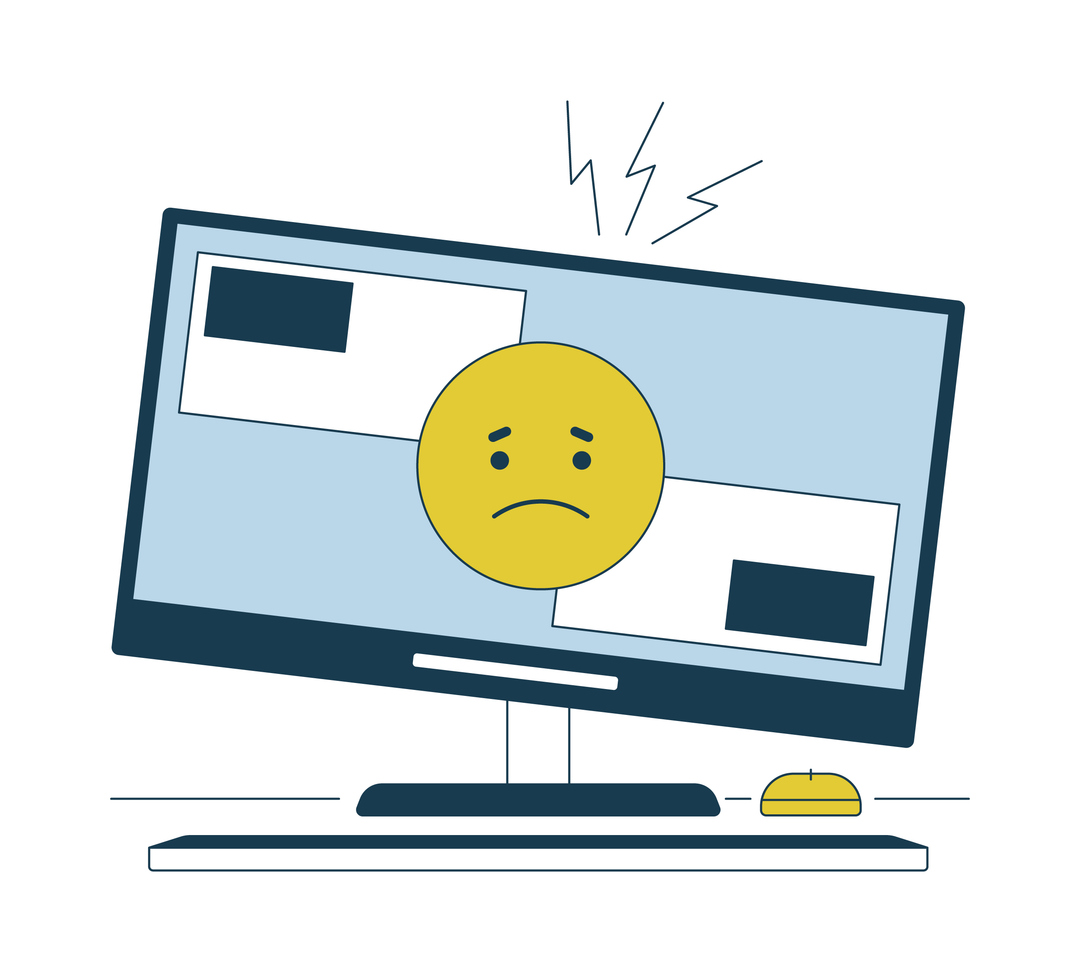Just Ad'ed | March Roundup
Blueprint's "Just Ad'ed" Weekly Digest – your new go-to source for Paid advertising news.Stay ahead of the curve with our weekly newsletter, Just...

Blueprint's "Just Ad'ed" Weekly Digest – your new go-to source for Paid advertising news.
Stay ahead of the curve with our weekly newsletter, Just Ad'ed, as we bring you a concise roundup of the most relevant and impactful news stories from the world of Paid Advertising. Staying informed is crucial in the fast-changing landscape of digital marketing, and Just Ad'ed is designed to keep you in the loop without overwhelming you.
Signing up for Just Ad'ed is a breeze: Simply click the link below to subscribe, and start receiving your weekly dose of essential paid advertising news.
X announced the addition of full Vertical Video Ads, YouTube announced a vertical format would be available for Live Stream. Meanwhile, vertical pioneer TikTok is now incentivizing horizontal videos.
While most of us dont care about X, there is an obvious trend of media channels and companies continuing to experiment with different formats (and copy each other's homework) as they push for new and larger audiences.
Flexibility is key in navigating the changing expectations of formatting. Be ready to embrace both portrait and landscape formats, (or shoot big and crop) for versatile content.
YouTube is expanding Content Takeovers, enabling brands to be exclusive advertisers on: creator channels, custom lineups, playlists, and specific videos,
Content Takeovers present a rare strategic opportunity for a brand during major events or product launches - guaranteeing dominance over a specific topic, channel, or area of interest.
Exclusivity comes with a hefty price tag. Anyone interested in this go-big or go-home style of advertising will have to weigh the potential cost against the ROI of being the solo advertiser in front of a YouTube audience.
A recent report shows only 13% of consumers are against ad tiers for streaming. Both Google and Amazon are embracing ads - Google is introducing connected TV (CTV) placement and Amazon rolled out its ad tier on January 29th.
While CTV placement has a lot of details to be worked out, some estimates have Amazon ads showing up just a few minutes per hour. Advertising in-stream could have have serious breathing room compared to other mediums.
What's old may be new again with ads on every living room TV. For now, all but the largest brands, its likely these options are going to be expensive and be exceptionally difficult to attribute to sales.
Recent research has scrutinized a well-circulated myth that the average person sees "10,000 ads a day". At 625/ads an hour, this doesn't really seem possible.
While advertising can seem omnipresent, it's likely to be overestimated on how many ads the average person sees.
Remember: repetition is more important than the potential size of the audience. Even if the average person still sees a hundred or so ads a day, they will only remember those ads they see repeatedly. In the meantime, have fun shooting down this advertising old wives tale whenever its brought up.
Microsoft rolls out new tools for enhanced conversion to be used for campaign optimization and performance improvement.
The new tools streamline campaign creation to a few steps, and improve conversion accuracy. Expect better and more readily usable data.
Bing has been (very) slowly gaining search share in the US, but with an audience that is male, young and affluent. The Beta includes customer matching and client prospecting, so if your audience is in that target zone, it could be a great place to try a few ad dollars.
Apple has stopped ignoring the RCS wave, adopting it officially into their messaging system - this means officially losing the green-text shame as we know it.
Juniper Research’s Molly Gatford claims this could make a big splash in the marketing world, allowing marketers to increase value exchanges and engagement rates.
Bigger audience = bigger engagement: advertisers should expect a quick increase in customer engagement and interaction. Revenue from RCS traffic is expected to grow nearly 8x by 2025, going from $1.3 billion in 2023 to a projected $8 billion in 2025.
Facemoji partners with Microsoft to allow advertisements on their platform, officially starting with the U.S., U.K., Canada, and Australia but expecting to expand globally in the near future
Microsoft Ads is taking a new lead in the game of digital advertising, pushing the boundaries of ad placement with this new expansion.
For brands trying to increase visibility, Microsoft Ads’ new platform might be vital to doing just that, especially with U.S., U.K., Canadian and Australian markets available right now.
Netflix rolled out its first global partnership with Expedia, running ads localized for various languages and cultures.
Expedia plans to be an alpha measurement partner for Netflix in the U.K. and Brazil. The campaign spans 9 markets, reaching over 23 million monthly viewers worldwide.
Expedia plans on tailoring ads to specific markets and languages - creating potential for precise targeting on major streaming platforms.
Tiktok Shop (no matter how sketchy audiences say it seems) aims to make $17.5 billion in e-commerce next year, making them top competitors for brands like Amazon and Shein.
All eyes on Gen-Z: younger shoppers are leaning into the social media commerce wave, making TikTok shop a valid competitor to major brands like Amazon and Shein.
This marks a clear shift in the eCommerce industry giving brands the chance to reach new audiences through TikTok’s massive user base, and drive sales directly through the app.
Drift has officially been acquired by sales engagement platform Salesloft in an effort to combine forces with both companies focusing on AI in the marketing world.
The merger could improve customer connection and engagement between brands and customers using AI-driven insights.
The merger is just another step in the AI revolution - the best thing to do? Get on the train and use it to your advantage as much as possible.
Instagram rolls out Creator Marketplace in new markets, including the UK, New Zealand, Japan, India, Canada, Australia, and Brazil.
Instagram’s marketplace helps brands partner with creators to reach a larger audience with partnership ads and sponsorships.
Brands are able to be matched with creators relevant to their target audiences using Instagram’s AI-powered recommendations and targeted search filters.
Snapchat reveals a new partnership with eCommerce marketing platform Fospha for cross marketing ROAs.
In an effort to move away from their social media focus, Snapchat’s new partnership offers an array of new tools for eCommerce advertisers.
New platform, new audience: this partnership could be a key factor in expanding into a younger-focused market.
Tech giants Meta and Google misjudge their budgets and are forced to refund advertisers over the year. Meta advertisers are to be refunded only 90% in credits, Google’s overcharge for impressions in late 2023 warranted a promised refund with no details available.
The mismanagement of the budgets by Meta and Google could mean deeper issues. The lack of transparency and details provided about both the budget mismanagement and the repayment plan raises some major red flags.
Now is the time to monitor your budgets as closely as possible - and speak up if something looks off. Accountability needs to be taken seriously after this.
TikTok integrates AI assistants directly into Adobe Express for desktop users. The assistant focuses on offering insight, ideas, and generating videos for advertisers.
The new integration streamlines workflow by taking TikTok insights and cutting out cross–platform work by integrating all insights into the same place.
The new integration allows for experimentation with advertising and tools available to marketers.
75.85% of X’s ad traffic comes out to be bots, noted by CHEQ, a company that monitors fake users and bots.
With profitability remaining negative, Segment isn’t looking very promising - but this might not be just a Twilio issue. This outcome could have a larger impact on the CDP market and Twilio’s investor sentiment.
The CDP market is one to watch right now, with investors putting more pressure on Twilio to lose Segment.
Ad-tech giant Criteo projects $30-$40 million loss as a result of Google’s cookie phase-out in the next year. Criteo isn’t the only one expecting a loss, with IAB looking at a potential $10 billion loss by 2025.
The shift in the ad-tech landscape is going to be highly impactful on campaigns and strategies. Criteo is heavily invested in Google’s Privacy Sandbox as a solution, and is actively testing its capabilities.
Awareness is key with the shifts in the advertising world right now, as is understanding what changes are happening and how they may affect campaigns.
Amazon rolls out new advertising identifier ID++following Google’s third party cookie phase-out. ID++ will be exclusive to the Amazon ecosystem, available through DSP and APS.
This could make Amazon a front-runner in post-cookie advertising, however the exclusivity raises concerns about a new fragmented environment in ad-tech.
With companies scrambling to find new solutions to the current post-cookie world, it’s important to know the options available to advertisers.
After filing for bankruptcy last year, Vice is moving to sell Refinery29, lay off hundreds of employees, and cut publishing from their website.
Vice has gone through a ton of changes over the past year with co-CEOs leaving in 2022 and 2023 - these changes mean new audiences and a shift in Vice’s demographic.
Watching Vice’s new moves is going to be imperative to see how advertising strategies might need to change in the future.
Meta’s team sizes are shrinking and being replaced heavily by AI, leaving advertisers neglected.
The shift towards automation leaves advertisers lacking support and communication, which could potentially impact campaign performance.
Reassess advertising needs: it’s important to know whether or not your campaign is receiving the support it needs with the movement into self-service and automation.
Elon Musk sues OpenAI CEO Sam Altman for prioritizing profits over human benefit.
Musk claims that OpenAI and Microsoft partnered to become a "closed-source subsidiary". This could have drastic effects on the use of AI in the marketing world.
The lawsuit between Musk and Altman highlights the growing tension around AI growth. As the industry continues to progress, it faces more scrutiny from clients and consumers.

Blueprint's "Just Ad'ed" Weekly Digest – your new go-to source for Paid advertising news.Stay ahead of the curve with our weekly newsletter, Just...

Blueprint's "Just Ad'ed" Weekly Digest – your new go-to source for Paid advertising news.Stay ahead of the curve with our weekly newsletter, Just...

Blueprint's "Just Ad'ed" Weekly Digest – your new go-to source for Paid advertising news.Stay ahead of the curve with our weekly newsletter, Just...